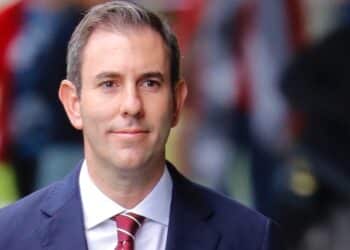Following much debate about when the RBA would exit its easing policies, the central bank has held the cash rate at a record-low 0.1 of a percentage point for another month.
Speculation is running wild about interest rates rising before the RBA’s long time “deadline” of 2024 and the RBA appears to be inching into that debate.
Towards the end of last month, RBA assistant governor for economics Luci Ellis reiterated the central bank’s position of “supporting monetary conditions”, noting that the pandemic is not over and that Australia still has a long way to go to achieve an inflation rate of 2-3 per cent.
Commenting on the bank’s latest decision, Harley Dale, chief economist at CreditorWatch, said that is “no surprise to anybody”.
Stressing the importance of “not getting ahead of ourselves”, Mr Dale advised against speculation over the future of the economy.
“Right now, nobody knows when circumstances will become appropriate for interest rates to rise and that includes the RBA itself,” Mr Dale said.
“The June 2021 RBA Credit Aggregates and the May results for the CreditorWatch monthly Business Risk Review are just two of many examples of how Australia’s recovery lacks the breadth and depth we require.
“There are holes in the ‘how good are we doing’ headlines and that includes a share market that is more vulnerable than seems to be the focus that it deserves.”
After conceding last month that the RBA’s conditions for a rate hike are still far from being met, AMP Capital’s Shane Oliver reiterated there is still a way to go to reach wage growth of above 3 per cent and target-zone inflation, particularly with coronavirus still causing periodic problems.
“That said, we expect the conditions for a rate hike to be in place by 2023 so anticipate a 2023 rate hike, ahead of the RBA’s own expectations for no rate hike until 2024 at the earliest,” he added.
However, leading banks disagree with the current time frame set out by the central bank, with many confident the conditions to change monetary policy will be met sooner.
Last month both Westpac and Commonwealth Bank detailed rate hike predictions, with the latter foreseeing a rate lift as soon as November 2022.
CBA’s head of Australian economics, Gareth Aird, explained that the big four bank’s predictions have been at odds with the RBA’s “2024 at the earliest” forward guidance for months.
“Our message has been consistent and unswerving: the labour market will tighten quickly, and this means that wages and inflation will lift, particularly because the supply of labour is constrained,” Mr Aird said.
Similarly, Westpac opined “game-changing” employment figures will see the RBA lift the official cash rate by as much as 0.75 per cent by the end of 2023, starting with a 15 basis points increase in the first quarter.
“We now expect that the RBA will assess that it has achieved the conditions necessary for the first interest rate hike by the first quarter of 2023,” Westpac’s chief economist, Bill Evans, said at the time.
Researchers, on the other hand, are less confident, with BIS Oxford Economics’ Sean Langcake opining on Tuesday that the wage pressures aren’t quite there yet.
“The labour market continues to outperform expectations, and has weathered the withdrawal of JobKeeper well. But we are still some time from seeing broad-based wage pressures emerge,” Mr Langcake said.
And while the speculations forecasts continue at home, the bank of banks – the Bank for International Settlements (BIS) – issued a warning to its banking peers last month, noting that the rapid rise in house prices across the world, including in Australia, pose serious challenges to recovery.
Judging that “some central banks may have little choice but to tighten”, the BIS warned that postponing normalisation beyond a certain point may actually harm the economy.
“Keeping monetary policy accommodative to support fiscal consolidation could encourage a further build-up of financial imbalances in the private sector,” the BIS said.
“Given the exceptionally low service burdens, it could also induce further increases in government debt. In both cases, the economy’s sensitivity to higher interest rates would rise.”




Yes the longer the cash rate remains at virtually zero, the more severe effect it will have when rates have to rise which more than likely will be well before 2024.
We are building a problem
Yes